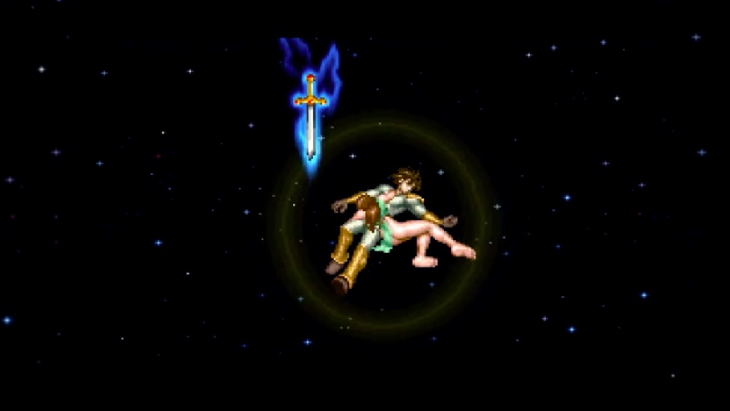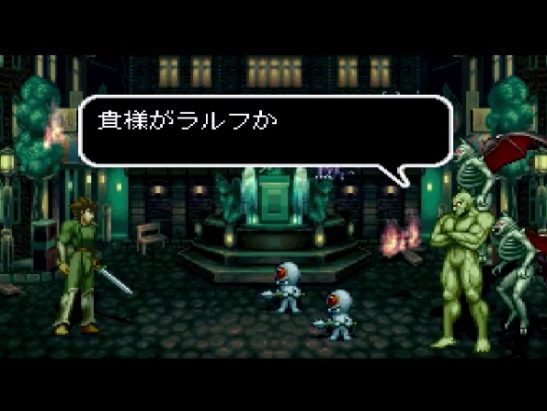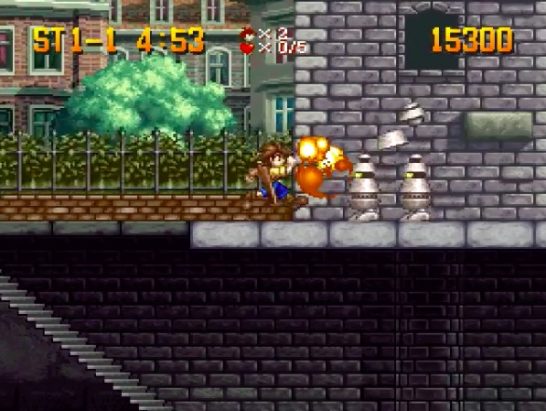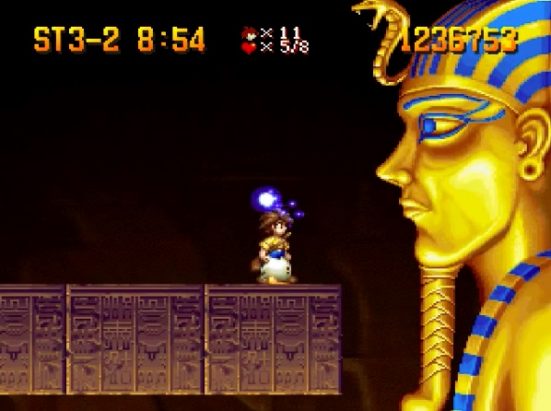
At the tail of the 1990s, the 2D platformer was a genre that was going out of style. Super Mario 64 had made 3D mainstream, and it did not help that Sony had a preference for titles that pushed 3D over games that still relied on sprites. Frequently, some games would be denied western localization if it was a 2D sprite-based game. Unless you were a big name publisher with a heavyweight 2D property like Castlevania, chances are your game would never leave the shores of Japan. The Adventure of Little Ralph is one of those titles that the west missed out on.
The Adventure of Little Ralph
Developer: New Corporation
Producer: PlayStation
Platforms*: PlayStation (Reviewed), PlayStation 3, and PSP (both via PlayStation Network)
Release Date*: June 3rd 1991 (PlayStation), July 26th 2007 (PlayStation Network)
Players: 1
Editor’s Note: * The game was not released outside of Japan

Ralph has a problem. His sexy girlfriend has been kidnapped by the nefarious Valgo; a total chad and pretty cool guy. As if this was not bad enough, this hulking yellow Adonis has also turned our hero into a child. Not only does Ralph have to go up against this stud as a kid, he has to prove he is a bad enough dude by surviving eight hellish stages that have various branching points.
Sword in hand, Ralph will cut his way through robots, devils, pigs, and polar bears- oh my. He can even golf-swing his sword against some enemies and objects- Scrooge McDuck style- which is crucial for clear some precarious platforms or cluster of enemies.
Controls are as tight as can be; snappy and very responsive. The Adventure of Little Ralph is very easy to pick up and actions feel satisfying, thanks to some deliciously crunchy arcadey sound design that punctuates every action.

Running, jumping, and collecting strings of fruit rarely feels this cathartic. Boisterous chimes and jingles invigorate the glistening pixel animation. Slashing and bopping on enemies pack a nice punch, while score digits bleed out of them like a phosphorous arterial spray. Even the background midi music sounds as if it is celebrating Ralph’s rampage as it playfully chirps at a brisk clip.
Musically, this is as 1990s anime as it gets. The mood is typically exciting and energetic, with a profound sense of adventure. A lot of attention is given to the melodies to make them catchy, and have an exuberant arcade-like crunch. The voice samples also sound nice and loud- the kind that would be expected from a fighting game.
As if being an unbelievably polished 2D platformer was not enough, this game has boss battles that come in two varieties. Standard child-Ralph bosses, and big-man Übermensch Ralph one-on-one Street Fighter mode bosses.

These set-pieces are saved only for the most epic of level conclusions and for the artists to really flex their expertise. Gameplay during these sequences are very basic and can be pretty shallow, since their design is meant for the purposes of spectacle and presentation.
Every classic 2D action platformer gimmick in the book is here. Platforms that move, some that fall, some that disappear, and some that try to crush you! You got ladders, ropes, and spike-pits; everything you could imagine.
This was not exactly an innovative title, even back in 1999 it was considered passé. What Little Ralph does do is pack it all neatly in a satisfying gauntlet that puts all your skills to the test.

The boys behind The Adventure of Little Ralph put a lot of care into the pixel art and animation. Characters are large and have the appropriate bounce to their movements and there is even a palpable sense of weight.
Details like how levels transition into one another seamlessly add a profound sense of place. Sprite tile repetition is kept to a minimum so every scene has a hand-crafted look, putting to shame what most 2D indie games attempt.
The overall aesthetics evokes a 90s fantasy anime-look. The color pallet is easy on the eyes with its pastel hues and lack of harsh blacks. Things are drawn with a playful roundness that gives the characters appeal where you just want to pinch their cheeks.
It may look like a simple Super Nintendo era action platformer with cute anime graphics, but The Adventure of Little Ralph has some cruel challenges that border on kaizo-traps towards its finale.

Don’t bother playing on easy since the game will mock you by locking you out of the final two stages. There are some enemies and auto-projectiles that are diabolically placed, as if the designers are having fun at the player’s expense.
The cruelest aspect of Little Ralph is the absurd cost of a physical copy that is commonly in the triple digits, and sometimes can even cost over $1,000 if is still factory sealed. Somehow this very SNES-style game has become an extremely valuable title among collectors.
This is likely due to it coming out fairly late in the PlayStation lifecycle (the PlayStation 2 launching the following year), and that it was a Japan exclusive, compounded by it having a short run. It also helps that it is also a polished platformer, that obviously had a lot of care poured into every aspect of it.

In spite of the cult status, Little Ralph was considered archaic in its day. Titles like Castlevania: Symphony of the Night or Super Metroid established that 2D platformers had to be long, and have open-ended design or RPG mechanics.
As time passed there have been fewer games like this, especially with this level of artistry in it. Every indie game developer and their mother has made a metroidvania today, and now there is nothing special about them. This makes the focus on platforming challenge over navigation and exploration in Little Ralph all the more unique.
For anyone who does not want to break the bank, there is a legitimate means to enjoy The Adventure of Little Ralph on a PlayStation 3 and PSP. It was put on the Japanese PlayStation Network in the PS1 classics category back in 2007, for the estimated yen equivalent of $5.50. You may not be able to admire it on your shelf, but at least it is a consolation to actually play it.